Editor’s Note: Join us at the upcoming BUILD & BRAIN Conference to hear more about these trends from several of the industry leaders quoted in this piece, including Belmont Village CEO Patricia Will, Archwood Senior Living Founder Trent Czisny and GSI/Transforming Age Chief Investment Officer Katie Pelczar. Click here for details and register to join us in Dallas Nov. 5-7.
Senior living development has been difficult over the past several years, with cost of capital and of construction limiting projects. This environment has shaped many of the top trends in senior living development and design, including trends related to market selection and a focus on renovation projects.
But senior living developers and operators also are well aware of the demographically-driven demand that is surging, and the need to create communities that appeal to the next generations of residents and their families.
“Baby Boomers are reshaping the industry by demanding greater choice, whether that relates to lifestyle, services offered or price point,” said Lisa McCracken, head of research and analytics at the National Investment Center for Seniors Housing & Care (NIC), in a press release announcing organization’s latest NIC MAP data.
That data set revealed fewer than 1,400 new senior living units opened in the third quarter of 2025, with industry-wide inventory growth falling to just 0.7% over the prior year.
This lack of new inventory, coupled with the strong and rising demand for senior living, is fueling occupancy rate growth; average occupancy rates should be above 90% by the end of next year, according to NIC’s projections.
The gap between strong demand and lack of supply was a hot topic at the recent NIC Fall Conference in Austin, Texas. The factors constraining construction are largely driven by a complex stew of policy and politics, and it’s difficult to discern when the environment will become friendlier to development. But with the population aging, industry leaders do believe that “something is going to give,” as GSI and Transforming Age Chief Investment Officer Katie Pelczar put it.
In the meantime, recent projects can be inspirational in terms of showcasing what is possible, and instructive in showing the trends that could gain even more momentum and shape senior living even more dramatically when construction does pick up steam.
Building in ‘last frontier’ markets
Naperville, Illinois-based Charter Senior Living has maintained an active development pipeline in recent years, even amid the general slowdown in construction across the industry. One key has been targeting secondary and even tertiary markets – places that “sometimes people can’t even find on the map,” CEO Keven Bennema said in March, at the NIC Spring Conference in San Diego.
Since 2017, Charter has embarked on 15 development projects, with four announced in 2024. Among the recently announced Charter projects:
- An independent living, assisted living and memory care community in Winder, Georgia. Winder is a community of about 18,000 people, located on the edge of a state park between Atlanta and Athens.
- An assisted living and memory care community in Murray, Kentucky. Murray is a community of about 17,000 people, located roughly 120 miles from Nashville and 170 miles from Memphis.
Bennema credits Charter’s development partner, DMK Development, with playing a key role in site selection and market analysis. Advantages to targeting smaller markets include lower land and staffing costs, as well as labor market engagement.
“We find that we’re getting better applicants and people who want to show up and do the interviews,” Bennema said in late 2024.
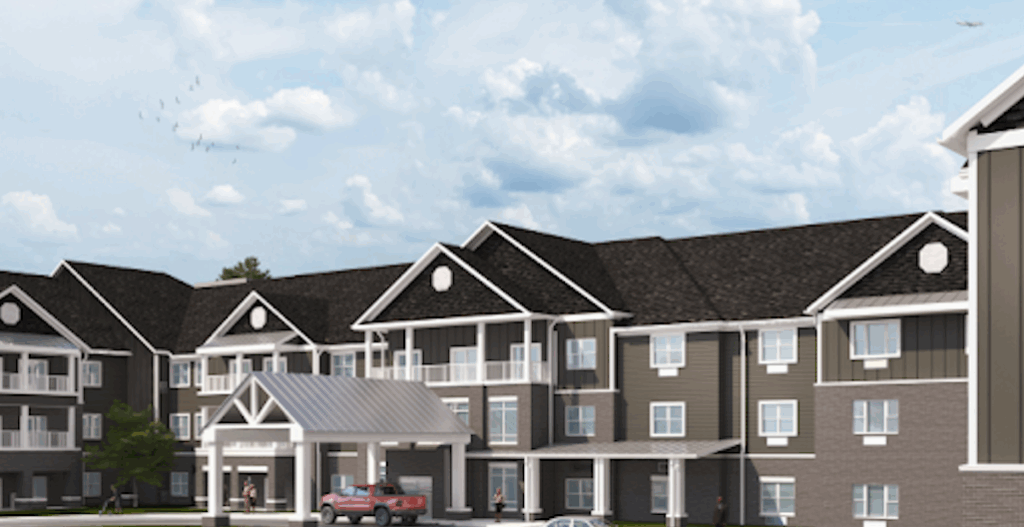
However, he cautioned that success involves a boots-on-the-ground mentality to connect with the local community. And due diligence is just as important in a small or rural market as in a metropolitan area.
“Just because you think you found a piece of land that may make some sense, there’s a whole lot of other things you need to do to mitigate that land,” Bennema said. “Is the land buildable? Are there liens on the land? …You have no idea what other skeletons may be attached to trying to get that done.”
Trent Czisny, founder of Archwood Senior Living, is another proponent of developing and operating communities in secondary and tertiary markets – what he calls “the last frontier of senior living.”
He founded Archwood to operate a 40-bed assisted living community developed by his family in Salem, Wisconsin. Although Salem itself has only around 1,000 residents, a market study showed consumer demand and an available labor pool in the surrounding area. And, drawing on his experience working at a Belmont Village community in suburban Chicago, Czisny believes that even small senior living buildings in rural locations can include scaled-down versions of upscale amenities like bistros and lounges.
Archwood’s first building hit 100% occupancy in the spring of 2022 and a second location in Salem has since opened.
Combating obsolescence
On December 2, 2021, Brewster Place began renovations on a five-story building on its Topeka, Kansas campus – exactly 59 years after ground was broken for the building’s initial construction.
The challenge faced by Brewster Place in revitalizing this building is one that many senior living providers are confronting. As of 2023, nearly two-thirds of U.S. senior living communities were at least 17 years old and 45% were 25 years or older, according to NIC data.
Given these statistics, it’s no surprise that renovation and repositioning of aging stock is one of the industry’s major design and development trends. And these efforts are sorely needed, as decrepit buildings are not appealing to the incoming generation of senior living residents.
“Some of this first-generation product just isn’t cutting it anymore,” HealthTrust COO Colleen Blumenthal told Senior Housing News.
Blumenthal cited 8-foot ceilings, communal bathrooms and an overabundance of studio apartments as among the common features that turn off prospective residents and challenge operators’ ability to keep a community viable.
Senior living providers that offer a full continuum of care face another common challenge: too many nursing home units. Challenging reimbursement rates, workforce shortages and other trends have driven the closure of nursing home units across the country.
A good rule of thumb is that for every nursing home bed there should be a minimum of 8 senior housing units, Dana Wollschlager, partner and industry practice leader of senior living development and advisory services for Plante Moran Living Forward, said in 2023.
Not every aging building is a viable candidate for renovation or repositioning. After a competitor opened a new building last year, a 40-year-old independent living community in Summerville, Georgia, was not able to maintain occupancy above 80%. Vivo Investment Group converted the property to affordable workforce housing.
Other obsolete senior living communities are being sold and converted to other uses, including behavioral health facilities and housing for people with intellectual and developmental disabilities. And some communities are simply “cleared for cornfields,” Blumenthal said.
Given the gap between available supply and incoming demand, this issue of losing obsolete properties is causing alarm in the industry, particularly given the ongoing obstacles to new development.
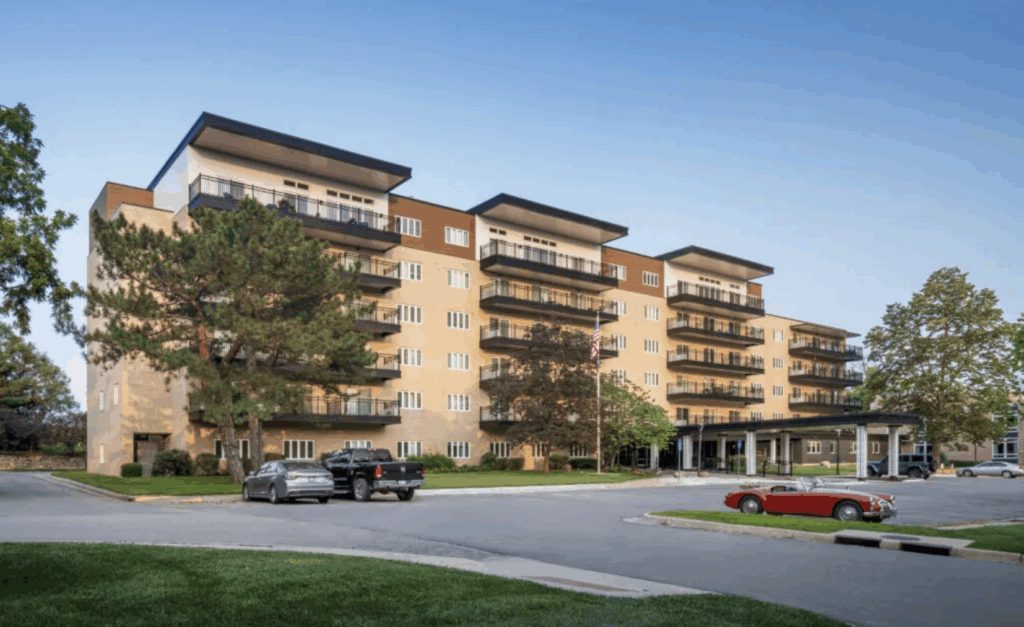

The good news is that the demand wave means that if a renovation is possible, the payoff can be significant. Brewster Place is one example. The renovation of the 59-year-old Redwood building was not easy and was extensive, including the construction of a sixth floor with penthouse units, adding a total of 23 apartment units, renovating dining spaces, updating a game room and lounge, and relocating an arts and crafts center. But as of early 2025, all but two of the new units were occupied, and independent living occupancy sat at 96%.
Taking biophilia, sustainability to the next level
Senior living projects are taking biophilia – the practice of connecting a building and its residents more closely with nature – to new heights, while also incorporating more eco-friendly designs that drive efficiency and harden buildings against extreme weather.
Take Belmont Village Coral Gables. Located in Coral Gables, Florida, the newly constructed independent living and assisted living community welcomed its first residents in January 2024. Featuring multiple landscaped terraces across its 10 stories, the community is a “garden in the sky,” said Belmont Village CEO Patricia Will.
The connection with nature dovetails with another major senior living trend: a focus on resident wellness and preventive health care.
“All of that outdoor space contributes and the vegetation that goes with contributes to an urban oasis on multiple levels,” Will said. “It’s spread on different floors in different ways and so that absolutely gets back to the integration of wellness.”
The building is also designed to withstand hurricanes, with common areas placed on the fifth floor and above to accommodate extreme flooding that might affect lower levels. The building is concrete and able to withstand winds of 175 miles per hour, and exterior windows feature an impact-resistant glaze.
Kisco Senior Living’s The Carnegie at Washingtonian Center is another recently opened community that demonstrates this trend, with 40% of the CCRC’s eight-acre site dedicated to reforestation efforts, walking paths, biophilic landscape design and rainwater filtration systems, according to Brendon McCall, associate principal for architect THW Design.
The Carnegie at Washingtonian Center is located adjacent to a 72-acre park, so creating connections to nature was a key goal of the design from the outset. And like Belmont Village Coral Gables, the biophilic elements tie in with the community’s overall focus on wellness. The CCRC features a wellness center that includes a heated saltwater pool, courtyards and walking paths.
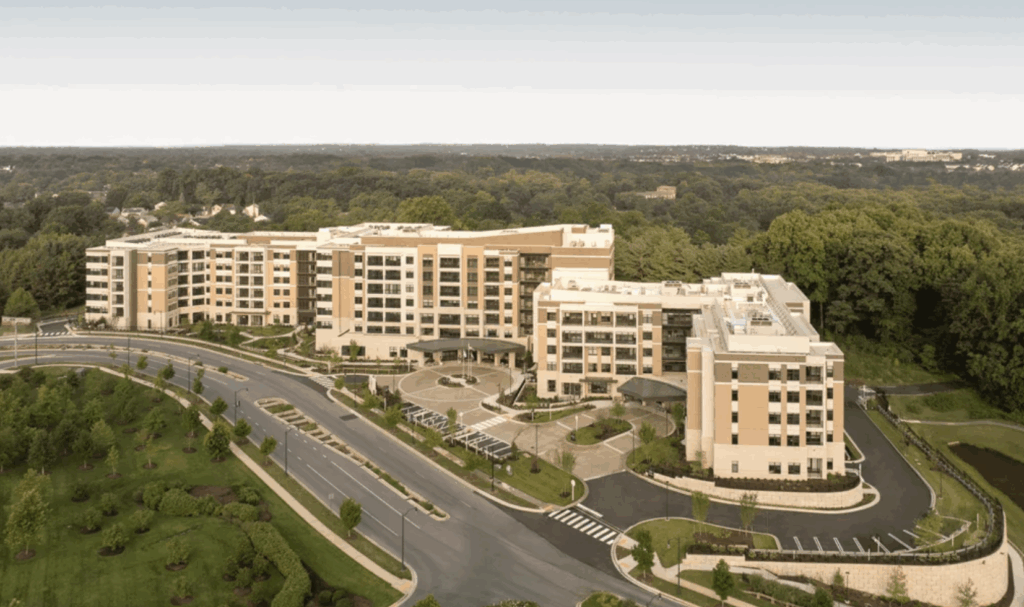

As The Carnegie at Washingtonian Center demonstrates, creating next-level biophilic designs starts with site selection for new senior living communities. This is shown dramatically by another newly opened community: The Springs at The Waterfront. The mid-rise community in Vancouver, Washington, occupies prime real estate on the banks of the Columbia River, allowing for dramatic connections with the natural world.
“It’s like going on an Alaska cruise every day you wake up there,” The Springs Living CEO Fee Stubblefield said in July 2024. “Last time I was there, I watched two eagles soaring from the 12th floor right out the window, while sea lions came up the Columbia River from the Pacific, feasting on the smelt running up the river.”
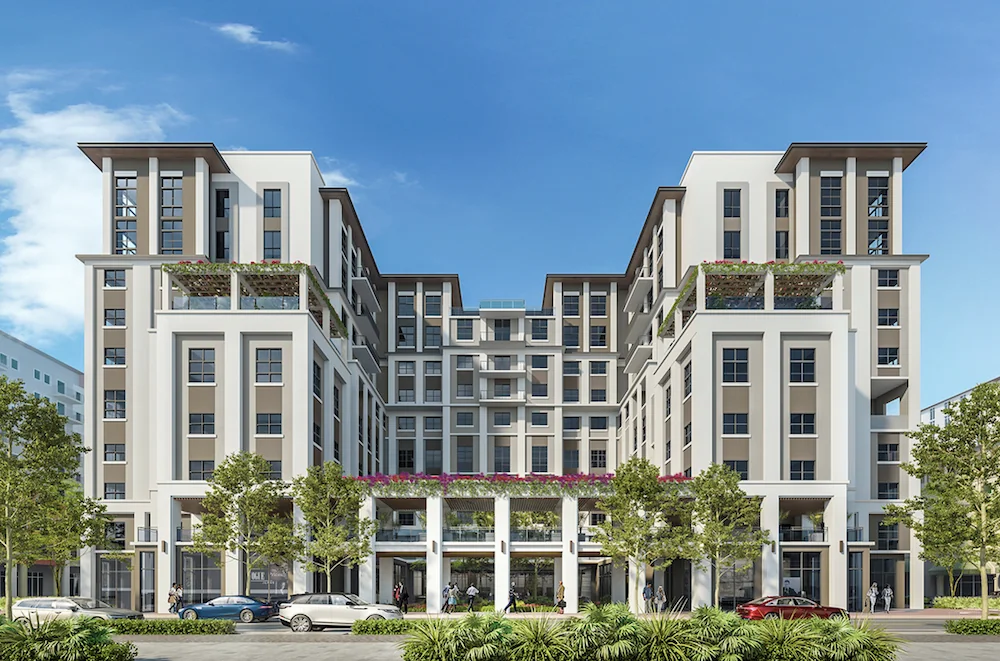

And this trend of biophilia and sustainability extends to various climates and levels of care. In Sun City, Arizona, the new Inspirata Pointe independent living neighborhood at the Royal Oaks CCRC is a “desert oasis,” according to COO Gretchen Cobb. To achieve this, the design incorporates promenades, pathways, covered breezeways and pocket gardens, integrated with shade and water features that provide passive cooling.
Showing the value of biophilia for higher levels of care, Masonic Homes Covina Citrus Heights Health Center in California is a 32-bed skilled nursing facility that prioritizes connections with nature. The project brought skilled nursing onto a larger CCRC campus for the first time, but the project also aimed to create outdoor spaces that all residents of the campus can enjoy.
To that end, the health center’s design includes both a secure memory care garden and a sensory garden that is open to all CCRC residents, with entry points from three different sides to make access easy across the campus. And, unlike previous landscaping, the new gardens take into account the limited water resources in California.
“We have little placards to tell [residents] about the plants that they can smell or touch, and all of the plants and vegetation are all drought tolerant,” said project manager Matthew Smith, with architecture firm SmithGroup.
Local inspiration, integration
Residents of The Westcott, a four-story active adult community, can take in views of the Blue Ridge Mountains and a historical water tower from the building’s “sky lounge.” And this vista is only one example of how the community’s design is inspired by, and integrates with, the local area of Canton, Georgia.
An art wall in The Westcott highlights Canton’s history, including the area’s coal mining and textile mill industries. The interior design aimed for a “historic town feel” by drawing from colors, finishes and materials common in the Canton area. And the exteriors likewise tie into the local area through the use of elements such as brick cladding.
The Westcott is just one example of this trend of local inspiration and integration in senior living design.
This approach has long been a hallmark of Bellevue, Washington-based assisted living and memory care provider Aegis Living.
“Every one of our buildings has a specific theme, not because it’s cool, but because it plays into the psyche of the neighborhood,” CEO Dwayne Clark told SHN in 2022.
For instance, the Aegis Lake Union community took inspiration from the gold medal performance of the University of Washington’s rowing team at the 1936 Olympics. The theme permeates the entire building design, including a racing shell that spans the length of the lobby ceiling, a silver and blue color palette to evoke a maritime lifestyle, and the integration of historical artifacts such as an actual Olympic torch used in 1936.
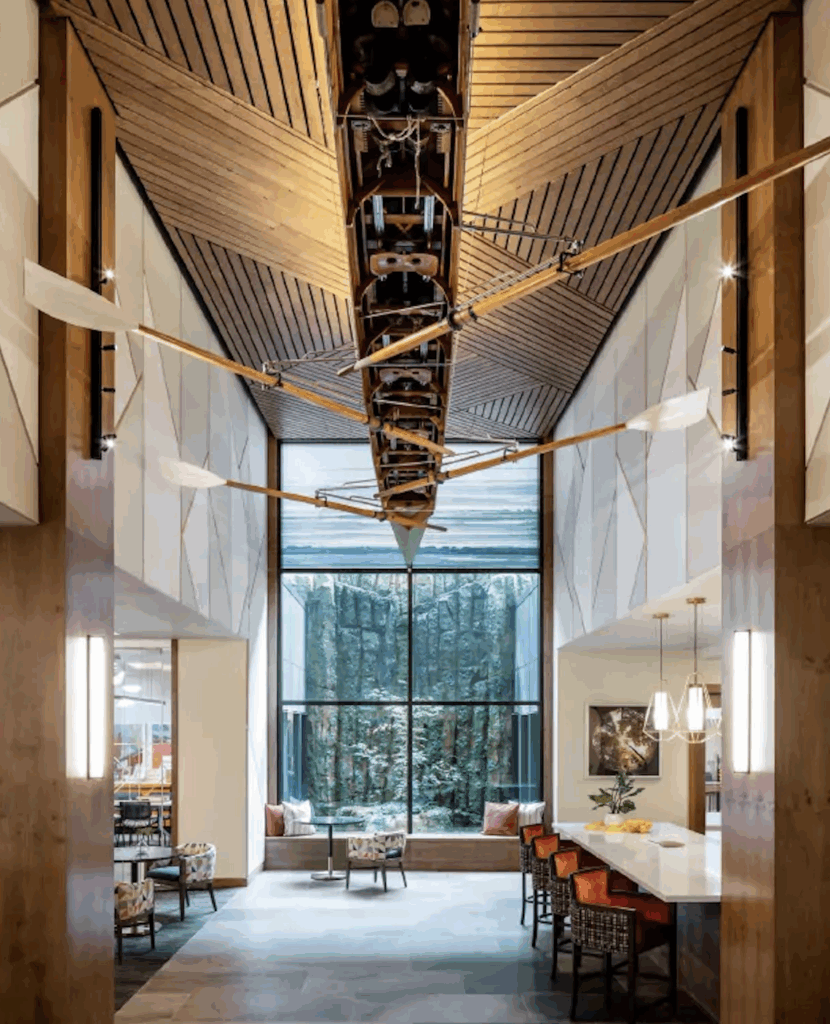

The Aegis portfolio is replete with examples of what Clark describes as the “build to a neighborhood” approach, including a community modeled after a ski lodge and an Italianate community inspired by the city of Capri.
Achieving a meaningful level of local integration is not easy, demanding more effort – and sometimes a bigger financial investment – than a more cookie-cutter approach. Development firm Makado conducted six listening sessions in New Prague, Minnesota, to gain a greater understanding of local dynamics in the design phase for a senior living community in that area.
The result was Praha Village, a 91-unit building with a design deeply informed by the community’s Czech heritage. The community features Czech-inspired building materials as well as maker spaces and arts and crafts areas, and the building’s operations likewise drew from the local Czech heritage. For instance, the dining program featured recipes from a cookbook of Czech and German recipes penned by a local hotel chef.
The effort required to achieve local integration can pay off by appealing to a generation that values more personalized experiences, while this approach is embraced by developers and operators that see value in a more boutique versus mass-market approach.
“I prefer to do developments in communities that have a real strong sense of themselves and identity, where we can come in and be a part of the fabric of who they are,” said Makado Group Founder Mark Appelbaum.




